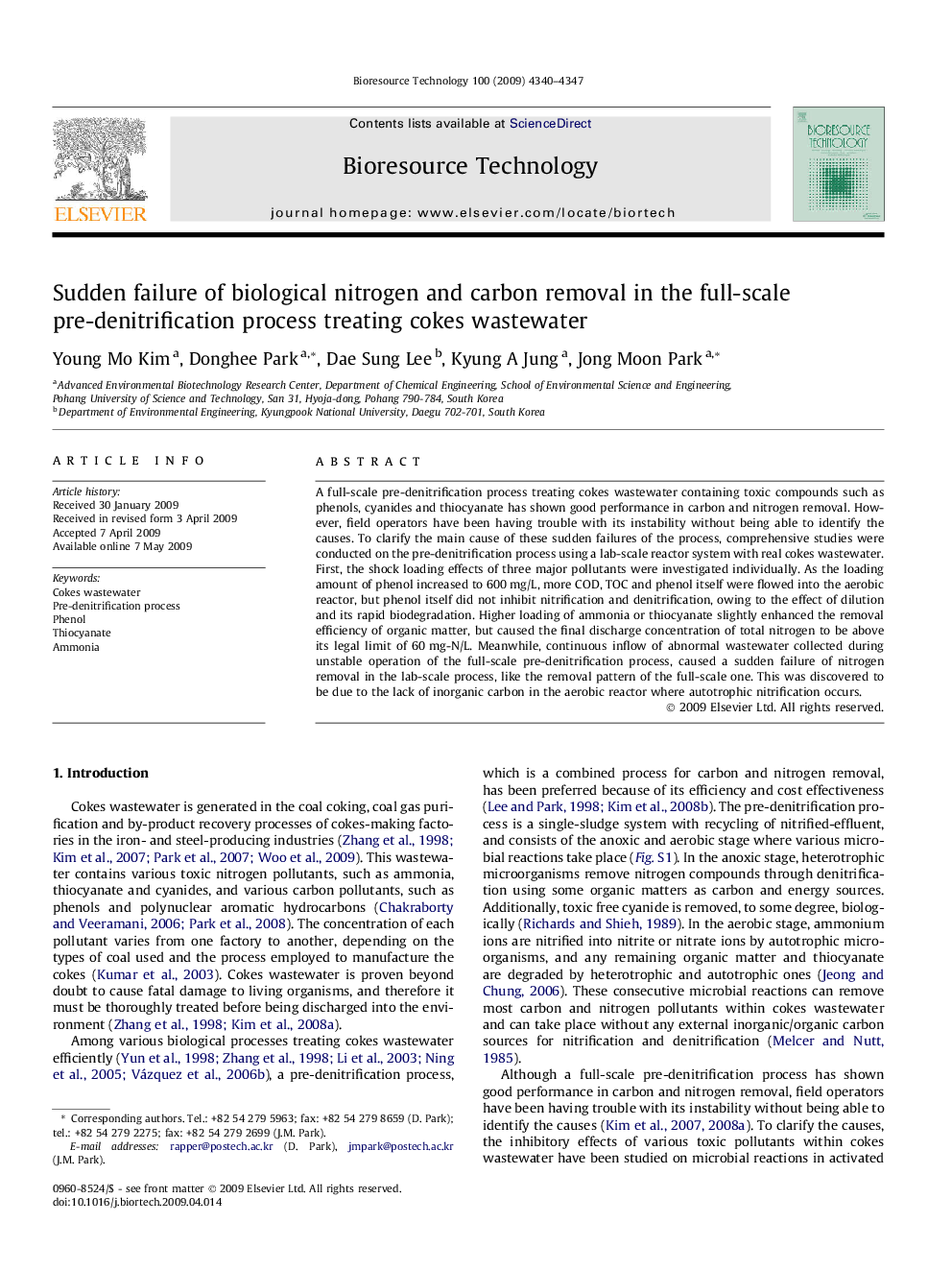| Article ID | Journal | Published Year | Pages | File Type |
|---|---|---|---|---|
| 684303 | Bioresource Technology | 2009 | 8 Pages |
A full-scale pre-denitrification process treating cokes wastewater containing toxic compounds such as phenols, cyanides and thiocyanate has shown good performance in carbon and nitrogen removal. However, field operators have been having trouble with its instability without being able to identify the causes. To clarify the main cause of these sudden failures of the process, comprehensive studies were conducted on the pre-denitrification process using a lab-scale reactor system with real cokes wastewater. First, the shock loading effects of three major pollutants were investigated individually. As the loading amount of phenol increased to 600 mg/L, more COD, TOC and phenol itself were flowed into the aerobic reactor, but phenol itself did not inhibit nitrification and denitrification, owing to the effect of dilution and its rapid biodegradation. Higher loading of ammonia or thiocyanate slightly enhanced the removal efficiency of organic matter, but caused the final discharge concentration of total nitrogen to be above its legal limit of 60 mg-N/L. Meanwhile, continuous inflow of abnormal wastewater collected during unstable operation of the full-scale pre-denitrification process, caused a sudden failure of nitrogen removal in the lab-scale process, like the removal pattern of the full-scale one. This was discovered to be due to the lack of inorganic carbon in the aerobic reactor where autotrophic nitrification occurs.
